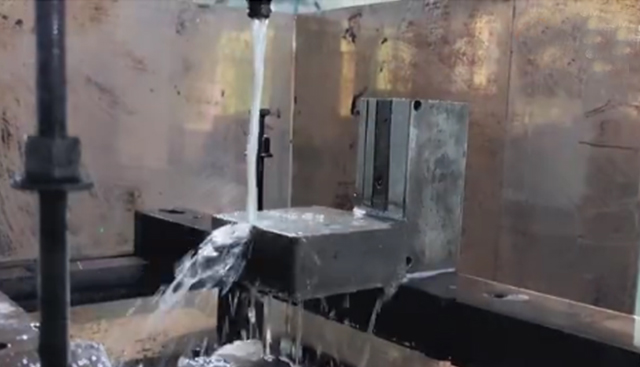

Did you know that slow-moving wire has higher processing accuracy than fast-moving wire
The same is the machining method of wire cutting. Slow-moving wire tends to have higher precision than parts processed by fast-moving wire. Do you know why? The editor of wococarbide.com will come to analyze the principles of this with you today.

The first electrode wire: The fast-moving wire uses a reciprocating molybdenum wire. After a long time processing, the wire diameter decreases and the processing size becomes larger. The slow-moving wire uses disposable copper wire or galvanized wire, etc., only one discharge is carried out from the workpiece, and it cannot be used reciprocatingly.
The second machine tool's screw and guide rail detection: fast-moving wire does not have a closed-loop detection function. The slow-moving wire is detected by a grating ruler. If the moving distance does not reach the predetermined size, the grating ruler will detect and let the lead screw motor continue to rotate to the predetermined position.
The third wire guide: the positioning of the wire electrode of the fast-moving wire is positioned by the guide wheel. When the guide wheel rotates at a high speed, there will be axial and radial beating, which leads to a decrease in accuracy and smoothness. Slow-moving wire uses a diamond wire guide or a jewel wire guide. The wire guide itself is fixed on the upper and lower heads without moving, and there will be no wire shaking.
Fourth multi-pass processing: The fast-moving wire can only be processed once, and the material will be slightly deformed after processing. The slow-moving wire can be processed multiple times, and the material will release the stress after rough cutting, and the deformation will be smaller during the fine trimming to achieve high precision.
In addition, as a professional cemented carbide manufacturer, Xidi Xiaobian will share some other processing knowledge with you.
Ways to reduce the relative wear of tool electrodes:
1. Correctly choose the polarity of the electrode. For short pulse width finishing, select positive polarity processing and connect the workpiece to the positive electrode; when using long pulse width processing, select negative polarity processing and connect the workpiece to the negative electrode.
2. Choose the correct electrode material. Choose materials with high melting points and high boiling points, and choose materials with good thermal conductivity. Graphite and pure copper are commonly used as electrode materials.
3. Correctly select the pulse width electrical parameters.
4. The adsorption effect of the processing process is used to compensate and reduce the electrode loss. Carbon black is usually only formed on the positive electrode, and the tool should be connected to the positive electrode with minimal loss.
Affect the electric spark
The size and consistency of the discharge gap, the wear of the tool electrode and its stability.
electrolysis
Workpiece material, tool cathode material, machining gap, electrolyte performance and technical parameters of electrolytic DC power supply.
Ultrasound
In addition to being affected by the accuracy of machine tools and fixtures, it is mainly related to abrasive grain size, tool accuracy and wear, tool lateral vibration, processing depth, and the nature of the processed material.
wococarbide.com has more than dozens of EDM equipment, including slow wire cutting, precision medium wire, high precision EDM, fast piercing and other equipment, which can meet the requirements of carbide precision fittings, upper and lower special-shaped parts, gear helical gears, etc. For the cutting of workpieces, there is a special EDM production workshop for carbide EDM to meet customers' needs for special products.
Hot information

